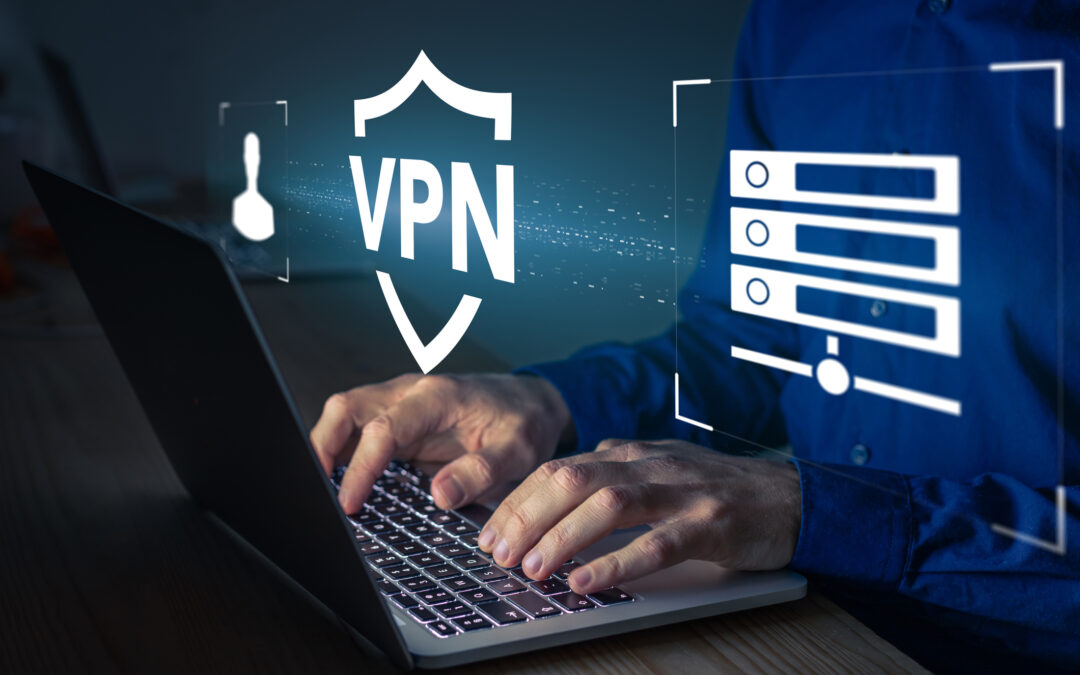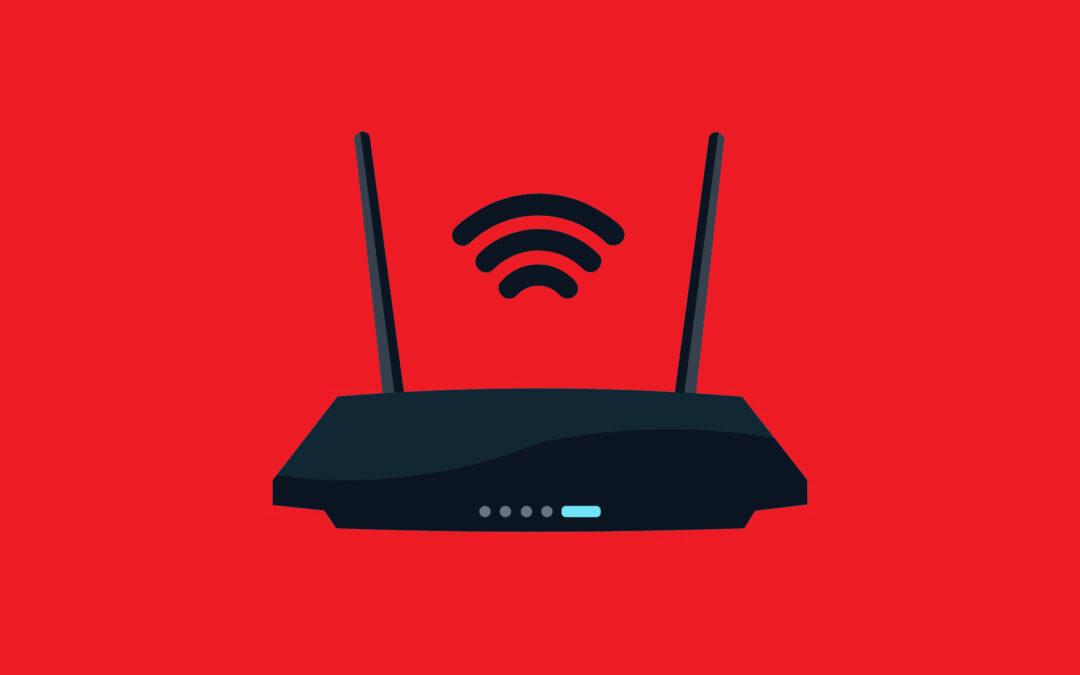
Oct 24, 2022 | Family, WI FI, Work From Home
Slow, interrupted, or choppy internet can be a frustrating experience. And if you and your family experience it when everyone is at home and streaming shows or movies, you know how it can ruin your evening. Subpar internet can also make everyday communications with friends and co-workers difficult and negatively impact your productivity, as well.
Having fast, reliable, and consistent internet throughout your day (and night) throughout your home is essential—almost as necessary as all the other utilities. It can help keep the peace at home, too!
But you may have experienced enough consistent problems to wonder if something is “wrong” with your internet. While slowdowns and unstable signal are often due to your Wi-Fi hardware being older or not updated, your internet may be slow because your internet service is not as reliable and fast as current technology can provide.
The good news is that you can upgrade to fiber internet—the fastest, most reliable internet you can find! And FPUAnet Communications and its team of expert technicians can help get you on the road to high-speed fiber internet starting with one phone call.
Before we explain how fiber can turn around your frustrating internet experience, we discuss five warning signs that indicate it’s time for an upgrade. From “dead zones” in your house to not being able to stream on multiple devices simultaneously, we will help you troubleshoot so you can make the right adjustments and improvements.
1) Slow Speed Tests
The fastest way to determine if you’re not getting enough internet signal is to run a speed test.
Speed tests can be checked on a cell phone in any room in your house. Start your internet troubleshooting by running a speed test anywhere and anytime you experience choppy or slow internet. Take note of the times of the day these slowdowns most frequently occur. It’s a great first step to turning your internet around.
2) Needing to Regularly Restart Your Router
If you frequently restart your router, it could indicate your internet needs an upgrade. While it’s recommended to reboot your router every few months to improve connections, doing so routinely (weekly or more often) is likely a sign your internet service is just not fast enough, rather than the router not working properly.
3) “Dead Zones”—Or Not Getting Adequate Wi-Fi Signal in Particular Rooms
Many homes have the dreaded “dead zone,” where your internet only has a weak or lifeless signal, rendering it useless to stream music, TV, and movies or even check your email.
With today’s Wi-Fi technology (properly set up and situated), dead zones should be rare, if not extinct. So, if you find dead zones in particular areas of your home, it may be time to improve your internet service to get a stronger signal everywhere in the house.
4) Struggling to Stream on Multiple Devices Simultaneously
If your family is struggling to stream TV and movies simultaneously on different devices, your family is likely to…well…struggle.
We understand that keeping the peace at home is a top priority, and quality internet should be a non-contentious issue! But difficulty streaming on multiple devices simultaneously is a sure sign of insufficient bandwidth which means you have outdated, poor internet service. So, if this issue keeps popping up, it’s time to consider an internet service upgrade!
5) Videos Buffering Too Long and Slow Streaming
Our final sign that you need an internet upgrade is probably the most obvious and exceedingly frustrating: your movies and TV buffering for way too long.
If you find this happening n, or if the picture quality is frequently pixelating, indicate your internet does not have sufficient speed or bandwidth to handle streaming.
Upgrading to Fiber Internet Can Make All the Difference
Any of these issues could indicate a problem with your internet service. Unfortunately, many customers experience more than one—or even all—of these problems and others we don’t list here.
This is where fiber internet technology, such as the service provided by FPUAnet Communications, comes in.
Fiber internet technology transfers its data (i.e., emails, music, movies, TV, voice and video calls, photos, files, etc.) through light, sometimes reaching around 70% of light speed! Traditional copper-based coaxial cable just cannot compete with fiber’s speed capabilities.
But it’s not just speed that makes the difference. Fiber also carries higher bandwidth capacities than cable or satellite internet. Taken together—increased speed and higher bandwidth—and fiber internet is the clear winner. With fiber internet from FPUAnet Communications, you can get your family on the path to high-speed, high-picture-quality, and reliable internet throughout your home.
So, if you’re experiencing any of the frustrating warning signs outlined above, reach out to FPUAnet Communications and its friendly and resourceful representatives. They’re happy to help you determine if upgrading to fiber is the right move for you, and to help you select a package of services that will greatly enhance your internet connection!

Sep 19, 2022 | Family
Parenting in the 2020s comes with complications that did not exist less than a two decades ago. And technology—especially smartphones and tablets—add to those complications.
From the distractions of texting and gaming to “addiction” to social media and the constant concern over inappropriate online content, today’s tech can be very problematic.
At FPUAnet Communications, we understand that technology can raise parents’ eyebrows and blood pressure. But it also makes life more efficient and easier.
To address some of your concerns, we've compiled a list of resources to help parents navigate tech use to keep kids safe online and manage time on smart devices.
These resources provide valuable tips on using tech to monitor your kids' devices and online use. It also includes advice for talking to your children—and fellow parents—about the risk of tech oversaturation.
Read below to learn more about resources to promote digital wellness in your family.
waituntil8th.org
waituntil8th.org is an outstanding resource to start learning more about how early exposure to smartphones and tablets can impact your child's life.
It features helpful information about excessive tech use that is easy to share with fellow parents and others in your community.
waituntil8th.org encourages parents to delay purchasing their child's first smartphone until they are at least 14 years old.
In addition, waituntil8th.org offers tools and support for parents trying to limit and monitor their kid’s tech use.
Two Books by Experts on Today’s Digital World
Social scientists and psychologists have been studying the effects of digital technology use on humans, especially younger people.
As new data becomes available, experts publish their findings and offer advice for navigating the digital world.
We recommend two books to parents wanting to help keep their kids safe and productive while on their devices, without completely disconnecting them from their tech either: Screenwise by Devorah Heitner, and The Tech Diet for Your Child & Teen: The 7-Step Plan to Unplug & Reclaim Your Kid's Childhood (And Your Family's Sanity) by Brad Marshall.
Each book recognizes our modern digital world's virtues but also acknowledges the need to cultivate a healthy, sustainable relationship with technology through limited screen time and a proper balance of off-device activities.
They also suggest strategies parents can employ to improve online safety and—perhaps just as helpful—for talking with your kids about responsible and limited tech use.
Parental Controls and Monitoring Software and Apps
In addition to those resources, there are many excellent software programs and apps to help parents monitor and control their kids’ devices and online activity.
We recommend Bark and Norton Family. By monitoring or blocking social media content and websites, these programs’ parental controls can ensure that you’re in charge of your children’s devices and what they can access.
Bark is particularly ingenious because of its ability to perceive and identify problematic or even dangerous content in social media usage instead of just outright blocking it.
This way, Bark fosters more practical online use while simultaneously giving parents peace of mind.
Norton Family includes powerful web content filters that can help keep your kid out of online trouble before it strikes.
It also includes settings that enable real-time access to previously blocked apps or websites as needed. Norton Family also tracks how much time your children spend on their devices, so you can better limit their screen time.
The above resources are a great start for parents wishing to teach their kids healthy online and digital habits while limiting their screen time.
By learning and sharing these strategies and tips, you can be more confident that your children will be savvy, conscientious tech users without being overly dependent on those devices.
And for more advice about how to make the most of FPUAnet Communications’ high-speed fiber internet while keeping your family safe online, follow our social pages!

Aug 22, 2022 | Small Business, Work From Home
As beneficial as the internet can be to empowering individuals and enriching lives, there are negative aspects to being online.
Privacy concerns, disclosed personal information and data, hacking and security breaches, and computer viruses still plague this internet.
FPUAnet Communications does far more than provide fast, reliable fiber internet.
We work tirelessly to deliver your high-speed internet service as safely and securely as possible. However, you still need to take steps to ensure your privacy and online security, too.
One of the most frequently cited recommendations to protect your privacy online is to use a Virtual Private Network (VPN).
But what exactly is a VPN, and how does it work? And do you really need a VPN?
Below we explain what a VPN is and discuss how it works, so you can make a more informed decision about whether to employ a VPN yourself.
What is a VPN?
A VPN is a private network that, once established and enabled, creates a secure “tunnel.” Through the tunnel, data sent and received by your devices online is transmitted to a private server, where the data is encrypted before moving throughout the internet.
In essence, then, through this process, your data is more protected and secure while you're online.
How do VPNs work?
VPNs utilize applications to transmit and relay online data (emails, browser searches, messages, photos, videos, etc.), to secure servers via the encrypted data tunnels.
Once encrypted data arrives at these secure servers, it gets routed to its final destination, such as a website, email server, or social media app.
The VPN's encryption process shields your I.P. address (your location online) and other sensitive personal data.
For example, instead of revealing your I.P. address, the VPN's server's I.P. address “becomes” your I.P. address, concealing who you are and providing extra protection.
Similarly, by using a VPN, the internet traffic you receive has gone through the same more protected process before reaching your devices.
This sounds helpful—but do I need a VPN?
A VPN is a solid online privacy and security measure.
While some cybersecurity experts still recommend them, technically, you do not need one.
Until recently, VPNs were more necessary than they are today. But technology and online security have improved markedly over the years, with many websites and apps employing strong data encryption, helping enhance online privacy.
People who regularly use public Wi-Fi, such as in coffee shops or airports, are more vulnerable to hacking and cyber-attacks.
VPNs can help protect your devices (and online privacy) in those situations. But you can employ other security and privacy protections that can safeguard your data and internet traffic without using a VPN.
Whether you use a VPN or not, please don't forget other essential protections, like password managers, anti-virus software, and ad blockers. They can protect your identity and prevent your online activity from being tracked.
Of course, should you have more questions about online security and privacy, FPUAnet Communications can always help.
And to learn more about navigating the web more securely and staying safe online, follow Fort Pierce Utilities Authority‘s social pages.

Aug 16, 2022 | Why Fiber?
No matter the type of game you play, be it an epic role-playing title, a city builder, a tactical battle simulator, or a global strategy game, a faster, more reliable internet connection can make all the difference. When you don't have to worry about your connection dropping, you can focus on coming out on top against your competition. And the advantages of faster internet for gaming extend well beyond the technical aspects.
Better internet means connecting and communicating with fellow players (whether you're playing on a team or against them). And if you're a streamer, you can be confident you'll stay connected on platforms like Discord, Twitch, or YouTube.
Using the high-speed fiber internet delivered to you by FPUAnet Communications, gamers can be confident their internet will keep up with their game—and create a fantastic experience!
But how exactly does fiber internet improve gaming? And why does fiber's technological power give gamers the edge they need to best their opponents and fellow players? Can fiber actually make a difference in the results and maybe even “up your game?”
We'll answer these questions and explain why fiber surpasses other kinds of internet to make for a superior gaming experience.
What Fiber Internet Is—and Why It’s So Much Faster Than Cable
First, let’s briefly discuss fiber internet and compare it to traditional “cable internet.”
Fiber internet is delivered by fiber-optic cables consisting of skinny strings of glass that use light to transmit internet data. Indeed, fiber’s speed comes close to the speed of light, easily surpassing cable internet speeds.
Cable internet, a once-great technology (roughly two decades ago now), uses standard coaxial cables composed of copper wiring. Unfortunately, copper wires cannot handle the same amount of data or transmit it as quickly as fiber's cutting-edge materials.
Simply put, cable can't keep pace with fiber's data transmission through light or fiber's consistently higher speeds.
Faster Download and Upload Speeds
The most basic and arguably essential part of any internet technology is its download and upload speed capabilities.
Download speeds clock the time it takes to transmit data, files, and other information from an online server to your device. Conversely, upload speeds refer to how long your device takes to share data, files, and additional information to an online server. These speeds are simply fundamental to any use of the internet, and they're especially vital to gamers, whose every reaction and decision is made in just milliseconds—and often determine whether you win or lose!
Higher download and upload speeds make for a far smoother, less jittery, more stable, and more responsive gaming experience—in other words, the kind of internet quality that may give you an edge against fellow competitors. As a result, the faster your download and upload speeds are, the better you can game.
Faster speeds get you into games much quicker, especially after an update is released. With faster download speeds, you can be among the first into the updated game—and, if your play is savvy enough, among the first victors to achieve awards and recognition—and all the bragging rights you’ve justly earned!
Higher Bandwidth
While faster downloading and uploading speeds are important, they are almost useless if not combined with greater bandwidth capacity. In simplest terms, bandwidth is the maximum capacity any particular internet connection can have.
Copper-based wires in basic coaxial cords used for cable internet are limited. Cable’s older technology cannot handle too much internet data at any moment; thus, its bandwidth is lower than fiber’s. This leads to more frequent freezes and delays—often in the middle of a gaming session—and the crashes and drop-offs dreaded by gamers everywhere.
Fiber internet bandwidth is substantially higher than traditional cable. Even in larger households with several simultaneous internet users, fiber's bandwidth shines.
So, the higher the bandwidth, the more data can be sent to and from your device for superior gaming performance—with enough bandwidth remaining to stream your games with friends.
Low Packet Loss
One of the most frustrating technical snafus gamers experience relates to packet loss. A “packet” is a tiny collection of data transmitted over a network between an online server and your device. Packets are critical to any internet activity, from something as simple as sending an email to posting and viewing videos and gaming. But with some forms of internet, these small data units don't arrive at their destination, causing maddening slow-downs, freeze-ups, and even crashes.
Packet loss can also impact other aspects of gaming, including hearing your friends’ voices—or even your own—sound like a robot while you’re playing on Discord! Packet loss (and low bandwidth) weakens Discord’s connection causing this distracting and embarrassing (if sometimes hilarious) side effect. Because fiber transmits data at nearly the speed of light, it can handle large swaths of packets (and data) much more efficiently. As a result, packet loss is reduced and keeps you on your game while maintaining voice quality.
Low Jitter
Just as crucial as receiving all of your data and files through packets is ensuring that the data hits your devices in the correct order. Too often, with older forms of internet technology like cable, the data that your devices need to operate—and you need to game—arrives jumbled, a problem known in the industry as “jitter.”
Fiber's superior capacity to transmit data at a near-light speed reduces jitter, especially compared to cable. Low jitter means that your data arrives correctly and in the proper order, creating a clearer, cleaner, smoother, and more reliable internet connection—and a much better gaming experience that won’t hold you back.
Low Latency
Finally—and to many gamers, the most crucial distinction—fiber internet ensures low latency. Latency is the time between a “request” sent from your gaming device to the game’s online server and then returned from that server to your device. Usually measured by the millisecond, the lower the lag, the shorter—and the better—the response time. So, latency is your internet connection's response time for processing requests and delivering data back and forth.
Low latency means that your device and the game's server better capture your agility, quick decision-making, and choices that can make all the difference to gaming outcomes. In addition, fiber's inherently low latency means you can enjoy gaming online without nearly as much lag and stutter that too often plague online games.
Fiber’s advanced technology can significantly improve your gaming experience—and maybe even give you the competitive edge you’ve been looking for against your friends! It’s just one of the many ways that FPUAnet Communications keeps you connected and helps you stay ahead of the game.
And to learn more about how FPUAnet Communications’ high-speed fiber internet can make your online experience even better, follow our social pages!

Jul 15, 2022 | Family, Small Business, WI FI
When it comes to the dependability and speed of the internet service in your home, a lot depends on your WiFi router―specifically its location in the house.
At FPUAnet, we’ve already got you covered with the area’s fastest and most reliable internet service. Now here are a few tips on getting the most from that service throughout your home.
Make Sure You Have Enough Coverage: If your home is less than 1,500 square feet, one router should provide enough coverage for your whole house. However, if your house is larger, you may want to look into creating a mesh network. A mesh network is a series of access points that communicate with each other to blanket your home with the WiFi signal. They optimize the speed of your connection and reduce “dead zones.”
Consider Where You Spend the Most Time Connected: If you have key locations in your home where you spend the majority of your time online, such as a home office or family room, take that into consideration when placing your router.
Look for a High and Uncrowded Space: Placing your router on a high shelf will help distribute the signal more widely and evenly through the house. It’s also best to avoid placing the router behind any large objects or closed up in a cabinet.
Give the Signal a Clear Path: While the WiFi signal can do a pretty good job getting through the walls and ceilings in your house, the one thing that can stop it cold is metal, including shelving, metal desks, and large appliances.





